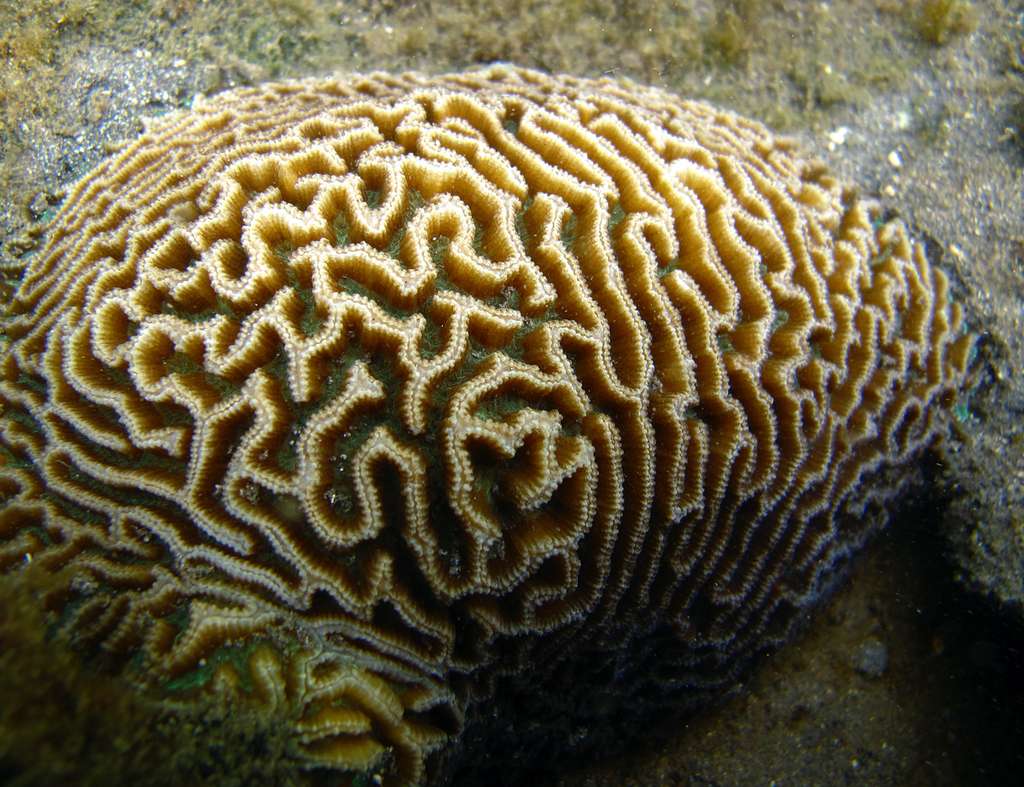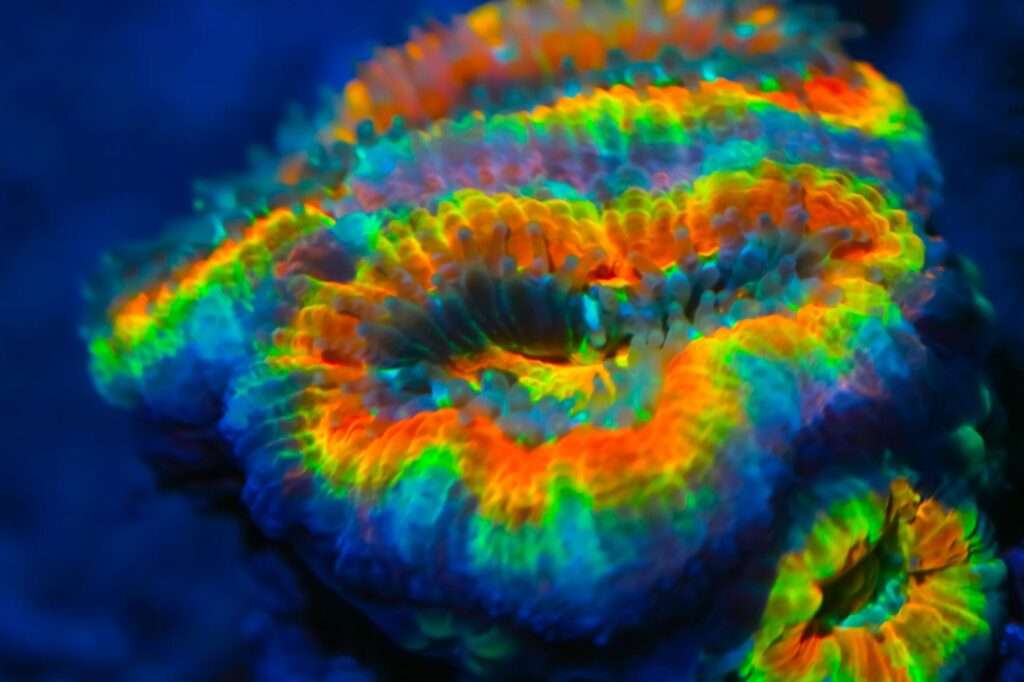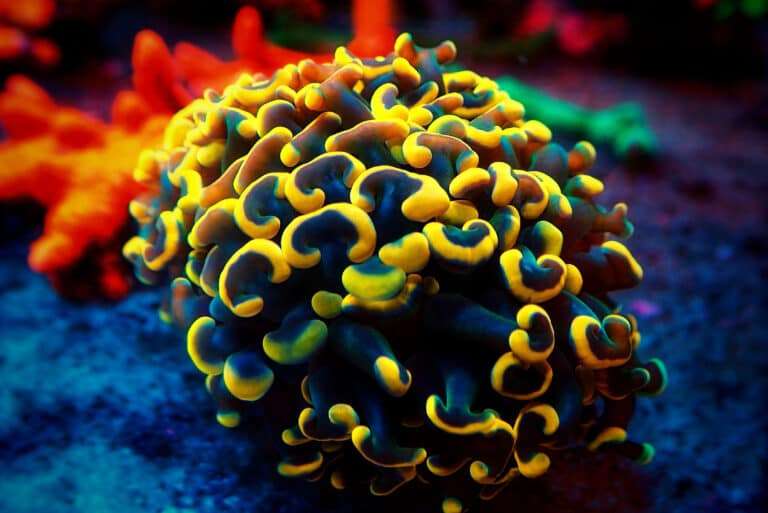
The walls and valleys of the Maze Brain Coral, Platygyra sp., are strikingly different. They can have flat or dome-shaped colonies that are enormous in the wild. Since some of the species distinctions are harder to distinguish until they are observed in the same place, they are believed to be more recently developed corals.
The Platygyra genus is frequently meandroid, which means that valleys form. They occasionally may also contain cerioid, which is Greek for “shared walls.”
Habitat
Ehrenberg first described the Platygyra genus in 1834. The Indo-West Pacific, the Red Sea to Madagascar, Egypt to Indonesia, Japan to New Caledonia and Australia, Mozambique, Somalia to Fiji, the Ryukyu Islands to Australia and Indonesia, the Philippines, Sri Lanka, and Papua New Guinea are all home to the Platygyra genus. At depths ranging from 10 to 131 feet, the Platygyra genus can be found on back reef flats, reef flats, and backwater areas (3 – 40 m).
Morphology
Large flat or dome-shaped colonies are formed by the Platygyra genus. Along with the coral and shared walls, the corallite walls arc and curve. They lack the rounded projecting lobes that the Goniastrea genus has that come from the septa. They also have corallite walls and jagged septal teeth. In comparison to Leptoria corals, the corallite walls are also heavier, and the troughs are larger and less twisted. Although there is a vast range of colors, the walls are often brown or dark gray with gray or green valleys. Green, white, cream, pink, gray, and brown are some examples of colors that can have vibrant or subdued tones. Species that were probably bought in the aquarium trade are described as follows:
The most prevalent species in the trade is P. lamellina, which may be because it thrives in shallower waters. Its walls can encrust on neighboring objects, including the aquarium wall, despite their twisting and turning.
In Captivity

- Feeding
The Platygyra genus has evolved a number of feeding techniques. They get some of their nutrients from a marine alga called zooxanthellae through a symbiotic interaction. They can also take in dissolved organic substances and planktonic creatures as well as food particles from the water column. Feed foods for filter feeders as well as rotifers, freshly hatched brine shrimp, mysis, and zooplankton-type diets. They do require feeding at least once a week, and regular feedings help them grow very well.
- Social Interactions and Compatibility
With other genera, this genus is somewhat aggressive. Due to the length of their nighttime sweeper tentacles, they must be kept apart from other corals.
Table





